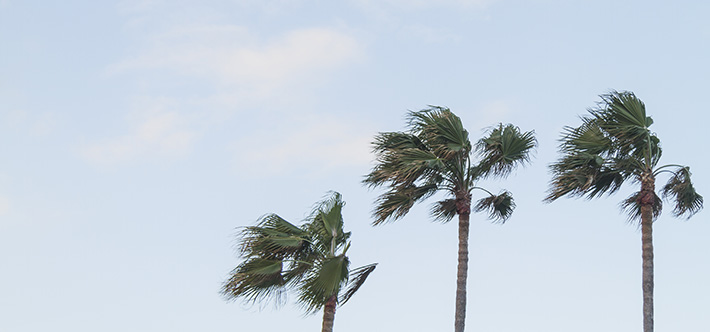In The Wake of Hurricane Ian
 The last week of September was pretty ugly for Floridians with Hurricane Ian hitting numerous cities like Fort Myers, Naples, and Tampa, to name a few. With 2.8 million small businesses making up the Sunshine state, many experienced power outages, flooding, and other physical damages. For the small business finance industry, natural disasters are always a possible challenge that they’ll have to contend with.
The last week of September was pretty ugly for Floridians with Hurricane Ian hitting numerous cities like Fort Myers, Naples, and Tampa, to name a few. With 2.8 million small businesses making up the Sunshine state, many experienced power outages, flooding, and other physical damages. For the small business finance industry, natural disasters are always a possible challenge that they’ll have to contend with.
Jordan Fein, CEO at Greenbox Capital, knows firsthand how to deal with natural disasters during hurricane season. The Miami-based funding provider has been in business since 2012 and has experience with funding businesses in tropical areas like Puerto Rico and the Virgin Islands.
“We’re now at a point where we feel that we do it among the best on how to handle these kinds of situations in terms of being able to meet our customers’ needs, especially during times of duress,” said Fein.
Flooding, wind damage, and trees fallen over on buildings and properties is what Tarneisha Peters, Regional Director of West Florida at Black Business Investment Fund (BBIF), has seen in her area of South Tampa. Many people have lost power for up to 4 days, affecting not only small businesses but staff members as well. And while the extent of the storm’s effects on some merchants are still unknown, Peters hopes the variety of program mentorship and training will help their clients remain resilient in the wake of the hurricane.
“Over 500,000 people experienced outages in the Tampa Bay area, as well as our staff in the Orlando area, including some of our clients,” said Peters. “Our goal is to support BIPOC business owner’s resiliency, so that they are prepared and able to navigate challenging circumstances that may come their way.”
 Mark Kane, CEO at Sunwise Capital in Boca Raton, has seen a fair number of hurricanes since he started his business in 2010. His company has even had to relocate to Orlando before just to have internet in order to work. Businesses that are a true “brick and mortar,” as Kane described, may not have the luxury of moving elsewhere. But before immediately knowing which angle to help clients, Kane tries to look at it from a couple different angles. What was the impact of the damages? What exactly do they need? And how can they accommodate those needs?
Mark Kane, CEO at Sunwise Capital in Boca Raton, has seen a fair number of hurricanes since he started his business in 2010. His company has even had to relocate to Orlando before just to have internet in order to work. Businesses that are a true “brick and mortar,” as Kane described, may not have the luxury of moving elsewhere. But before immediately knowing which angle to help clients, Kane tries to look at it from a couple different angles. What was the impact of the damages? What exactly do they need? And how can they accommodate those needs?
“I think it has to be looked at from a number of different levels,” said Kane. “So, what was the total impact? Is it ‘hey, I’m done, I’m out of business?’ or ‘hey, I need a break, because our business is slow, or we haven’t reopened, and I’m not able to make the payments.’”
Meanwhile, impacted businesses may be eligible for Business Physical Disaster Loans as well as Home Disaster and Economic Injury Disaster Loans. For physical damage, the deadline to apply for a loan ends November 28th and economic injuries the deadline ends June 29, 2023.
“BBIF is an SBA lender,” said Tarneisha Peters, who added that the SBA was a great partner of theirs. “[The SBA provides] disaster related support, guidance and business assistance to help provide relief when it is needed most.”
Last modified: October 21, 2022






























